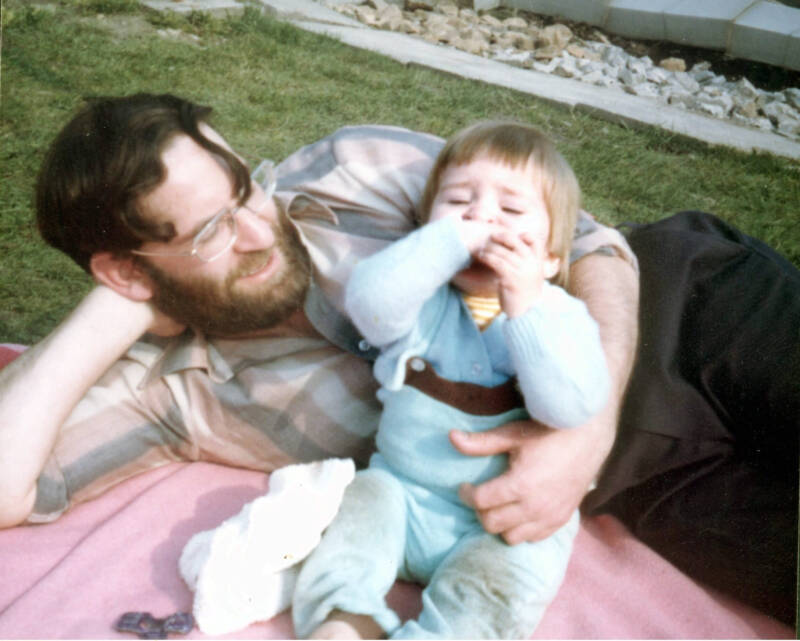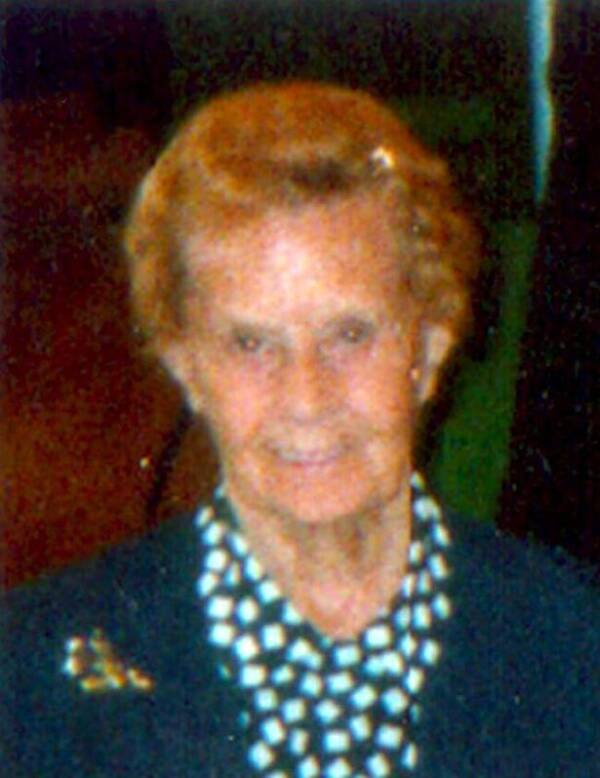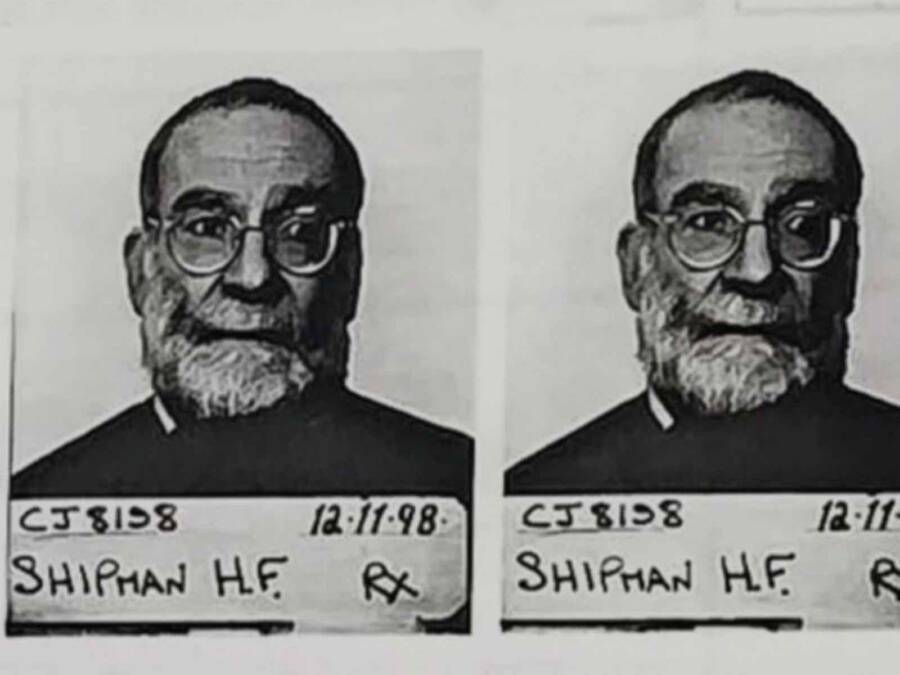In 2000, Dr. Harold Frederick Shipman was convicted of murdering 15 of his patients, then he killed himself inside his prison cell just four years later.

Getty ImagesThough Harold Shipman was convicted of 15 murders, it’s speculated that he killed upwards of 250 people.
Doctors are supposed to help people when they’re at their most vulnerable. However, Dr. Harold Shipman not only used his position to take advantage of his patients — he became one of the most prolific serial killers in English history.
Shipman would first diagnose his patients with illnesses they didn’t have and then inject them with a lethal dose of diamorphine. Unbeknownst to the alleged 250 people who died by his hand between 1975 and 1998, their visit to the office of Harold Shipman would be the last thing they’d ever do.
How Harold Shipman Got Into Medicine — And Murder

TwitterA young Harold Shipman in 1961.
Harold Shipman was born in Nottingham, England in 1946. He was a promising student throughout school and excelled in sports, particularly rugby.
But the course of Shipman’s life changed when he was just 17. That year, his mother Vera, with whom Shipman was quite close, was diagnosed with lung cancer. While she lay dying in the hospital, Shipman closely observed how the doctor eased her suffering by administering morphine to her.
Experts would later speculate that this was the moment that inspired his sadistic killing spree and modus operandi.
Following his mother’s death, Shipman went on to marry Primrose May Oxtoby while studying medicine at Leeds University Medical School. The pair had four children together, and from the outside, Shipman’s life was the picture of normality.
He graduated in 1970 and commenced life as a junior doctor, but he quickly moved up the ranks and became a general practitioner at a medical center in West Yorkshire.

RedditHarold Shipman with one of his children.
It was here in 1976 where Shipman first found himself in trouble with the law. The young doctor was caught forging prescriptions for Demerol, an opioid typically used to treat severe pain, for his own use. Shipman had become addicted.
He was fined, fired from his job, and required to attend a rehabilitation clinic in York.
Harold Shipman seemed to get back on his feet quickly and returned to work at Donneybrook Medical Centre in Hyde in 1977. He would spend the next 15 years of his career here before setting up a one-man practice in 1993. He developed a reputation among his patients and in his community as a good and helpful physician. He was renowned for his bedside manner.
Yet no one knew that at the same time, the “good doctor” was secretly killing his patients.
The Grisly Crimes Of The Good Doctor

YouTubeA Shipman family photo taken in 1997.
It was March 1975 when Shipman took his first patient, 70-year-old Eva Lyons. It was the day before her birthday.
At this time, Shipman had got his hands on enough diamorphine to kill hundreds of people, though no one was even aware of his addiction until the next year.
Though Shipman was fired that year for forging prescriptions, he was not removed from the General Medical Council, the doctors’ regulatory body. Instead, he received a warning letter.
According to investigators, Shipman would stop and restart his killing spree many times throughout his decades of terror. But his method of killing always remained the same. He would target the vulnerable, with his oldest victim being 93-year-old Anne Cooper and his youngest 41-year-old Peter Lewis.
Then, he’d administer a lethal dose of diamorphine and either watch them die right there or send them home to perish.
In all, it’s believed that he killed 71 patients while working at the Donneybrook practice and the remainder while operating his one-man practice. Of his victims, 171 were female and 44 were men.
However, in 1998, undertakers in his community of Hyde became suspicious of the number of Shipman’s patients who were dying. The neighboring medical practice further discovered that the death rate of his patients was almost ten times higher than their own.
They reported their concerns to the local coroner and then the Greater Manchester Police were called. This could have been the end of Shipman’s reign of terror – but it wasn’t.

FacebookHarold Shipman’s private practice, where he killed his most vulnerable patients.
The police investigation failed to carry out the most basic of checks, including whether Shipman had a criminal record. If they’d asked the medical board what was on his file, they’d have uncovered that he had forged prescriptions in the past.
Cunning Shipman had also covered his tracks by adding false illnesses to his victims’ records. As a result, the investigation didn’t find any cause for concern, and the deadly doctor was free to keep killing.
The Shocking Murder That Finally Exposed Dr. Harold Shipman
Shipman’s crimes were finally uncovered after he made the mistake of trying to forge the will of one of his victims, 81-year-old Kathleen Grundy, a former mayor of his town of Hyde.
After Shipman administered a lethal dose of diamorphine to Grundy, he selected the “cremation” box on her will to hide the evidence. Then, he used his typewriter to write her family out of the will entirely, leaving everything to him.
However, Grundy was buried, and her daughter, Angela Woodruff, was notified about the will by local solicitors. Immediately, she suspected foul play and went to the police.
Woodruff said of the situation,”The whole thing was unbelievable. The thought of mum signing the document leaving everything to her doctor was inconceivable. The concept of her signing a document which was so badly typed didn’t make any sense.”
Grundy’s body was subsequently exhumed in August 1998 and diamorphine was found in her muscle tissues. Shipman was then arrested on September 7 of that year.

Manchester Evening NewsKathleen Grundy, one of Shipman’s victims who died after an overdose of diamorphine.
Over the next two months, the bodies of another 11 victims were exhumed. A police expert also checked Shipman’s surgery computer and discovered that he had made false entries to support the fake causes of death he gave on his victims’ death certificates.
Simultaneously, Shipman insisted that Grundy was addicted to a drug like morphine or heroin and pointed to his notes as evidence of this. However, police found that Shipman had written the notes on his computer after her death.
Then, police managed to verify 14 other cases where Shipman had given lethal doses of diamorphine, falsely registered the patients’ deaths, and tampered with their medical history to show that they were dying anyway.
Harold Shipman always denied the murders and refused to cooperate with the police or criminal psychiatrists. When the police tried to question him or show him photos of his victims, he sat with his eyes shut, yawned, and refused to look at any evidence.
Police could only charge Shipman with 15 murders, but it’s been estimated that his kill count is anywhere between 250 and 450.
Dr. Shipman’s Jailhouse Suicide

Public DomainHarold Shipman killed himself in his jail cell in 2004.
In 2000, Shipman was handed life imprisonment with a recommendation that he never be released.
He was incarcerated in a Manchester prison but ended up in Wakefield Prison in West Yorkshire, where he took his own life. On the day before his 58th birthday, Jan. 13, 2004, Shipman was found hanging in his cell.
He told his probation officer prior to this that he was thinking about committing suicide so that his wife would receive his pension and lump sum.
With his death looms the question of why he killed. A number of theories have been put forward to explain why Shipman had the urge to murder, some say that he may have been avenging the death of his mother.
Others offer the more charitable opinion that he injected the elderly with diamorphine as a misguided way of offering compassion.
Still, others suggest that the doctor had a God Complex — and simply needed to prove that he could take life as well as save it.
After reading about Harold Shipman, learn about the fake doctor who got arrested for killing a woman with a butt injection. Then, read about 21 more doctors and nurses who used their position to commit murder.





